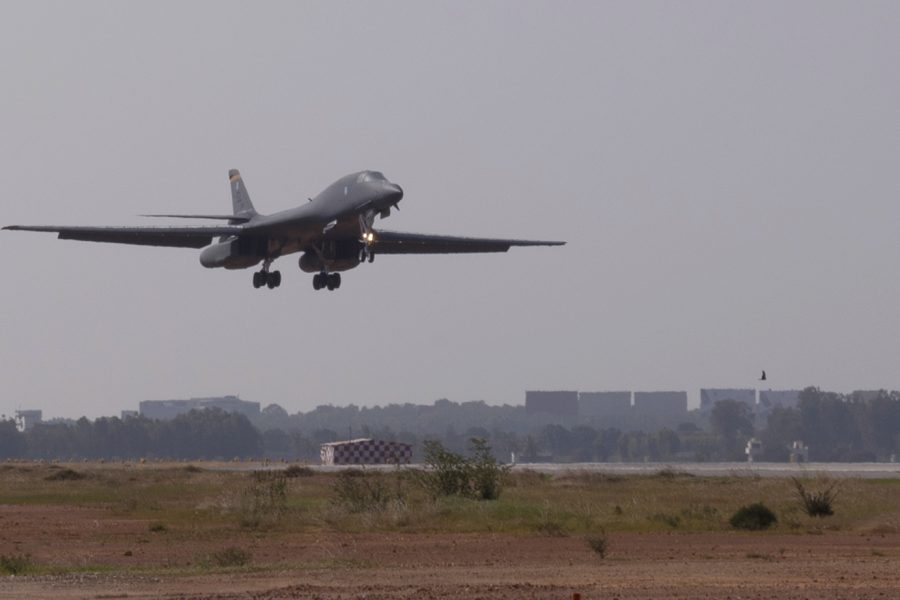A B-1B bomber from Ellsworth Air Force Base, S.D., flew over the 13th edition of the Aero India trade show at Bengaluru on Feb. 3, escorted by an Indian Air Force Tejas fighter. The bomber landed and went on static display, marking the first time a U.S. bomber has landed in India since 1945.
The B-1B was joined by a C-5M Super Galaxy on the tarmac. The visit was meant to highlight growing ties between the U.S. and India.
“India plays a key role in the Indo-Pacific region, and our cooperation advances our shared vision of a rules-based international order that promotes the prosperity and security of all countries,” U.S. Charge d’Affaires Don Heflin, head of the U.S. delegation, said at an Aero India press conference Feb. 2.
Besides showing the U.S. flag and underscoring the strategic cooperation between the two countries, the B-1B visit was an exercise of the Bomber Task Force concept, said 8th Air Force commander Maj. Gen. Mark E. Weatherington, one of the members of the delegation, in an 8th AF press release. “Our presence and engagement today is one of great historical significance we hope to build on in the years ahead,” he said. The B-1 joint flyover demonstrates “the strength of our partnership and our shared commitment to global security.”
Senior U.S. and Indian defense officials held talks at the event. The meetings “set the stage for growing our partnership with the government of India and our two air forces,” Weatherington noted.
India featured prominently in the Trump administration’s recently declassified Indo-Pacific strategy, released in January. It said the U.S. aims to bring India into a “quadrilateral security framework” including Australia, Japan, and Korea to be bulwark against China in the region.
The strategy said the U.S. aims to increase India’s capabilities to defend itself and be a security partner in operations beyond the Indian Ocean. To that end, the administration sought to “expand defense trade” with New Delhi. It also proposed that the U.S. and Japan would help finance projects in India that “enhance regional connectivity” with our militaries in the region.
Boeing recently announced it had secured an export license to offer its F-15EX—a massively upgraded version of the F-15E Eagle in USAF service—for India’s ongoing fighter competition, against the French Rafale and Swedish Gripen fighters. Also competing is Lockheed Martin, which has been pitching an advanced version of the F-16—re-branded as the F-21—offering to move the American F-16 production line to India. The deal is potentially worth $18 billion and would involve 114 aircraft.
Kelli L. Seybolt, deputy undersecretary of the Air Force for international affairs, said on the eve of the airshow that the U.S. and India “are deepening defense ties through avenues like exercises, cooperative agreements, and the integration of advanced U.S. defensive systems and platforms” into the Indian military.
Despite the continuing COVID-19 pandemic, Aero India drew more than 16,000 attendees.
